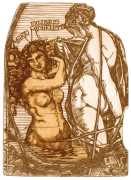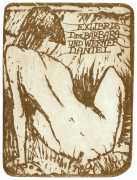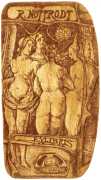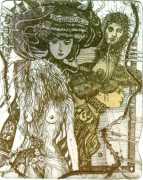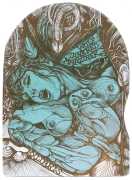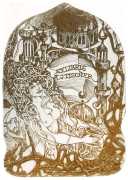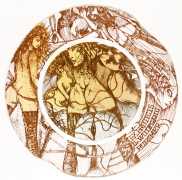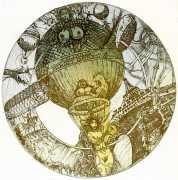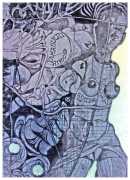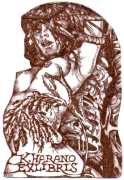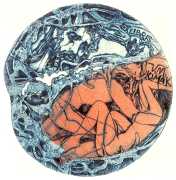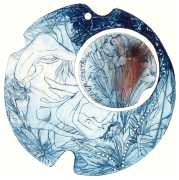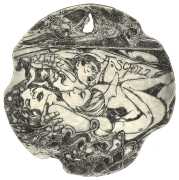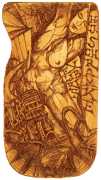 Like many eastern European artists, one of Pavel Hlavatý’s specialities is the ex libris or bookplate, which in Hlavatý’s talented hands becomes a colourful jewel of miniature detail and imagination. Each of these small masterpieces, of which he has already created more than eight hundred, displays a carefully thought out repertoire of characters and interactions, clearly interpreting the client’s brief and particular interests. Most include some witty and pertinent erotic element, and a particular feature of many of Pavel Hlavatý’s bookplates is that he experiments with shapes and outlines, unlike the uniformly rectangular designs of most ex libris. Thus we have circular bookplates, tall thin bookplates, bookplates with cutouts at the edges.
Like many eastern European artists, one of Pavel Hlavatý’s specialities is the ex libris or bookplate, which in Hlavatý’s talented hands becomes a colourful jewel of miniature detail and imagination. Each of these small masterpieces, of which he has already created more than eight hundred, displays a carefully thought out repertoire of characters and interactions, clearly interpreting the client’s brief and particular interests. Most include some witty and pertinent erotic element, and a particular feature of many of Pavel Hlavatý’s bookplates is that he experiments with shapes and outlines, unlike the uniformly rectangular designs of most ex libris. Thus we have circular bookplates, tall thin bookplates, bookplates with cutouts at the edges.
The first known bookplates or ex libris – a Latin phrase meaning ‘from the library of’ – are woodcuts from the fifteenth century, displaying the owner’s name and coat of arms. Through the centuries ex libris designers came up with ever more artful and imaginative designs for their clients’ libraries, inspiring a mania for collecting bookplates which lasted from the final quarter of the nineteenth century until the 1930s.
Today ex libris are once again in demand, eagerly sought by specialised collectors, and there are websites, fairs and exhibitions dedicated to the artform. Many plates are now produced as signed and numbered small format fine art prints, known as ‘free’ ex libris, never intended to be glued inside books but instead to be framed and displayed in the library of the client fortunate enough to be able to afford to commission it.
In recent years there has been a definite trend towards erotic subjects for bookplates, partly a throwback to the 1920s and 30s and partly to explore the potential of engraving techniques; it seems a pity that the high-quality results do not extend to more book illustration.




